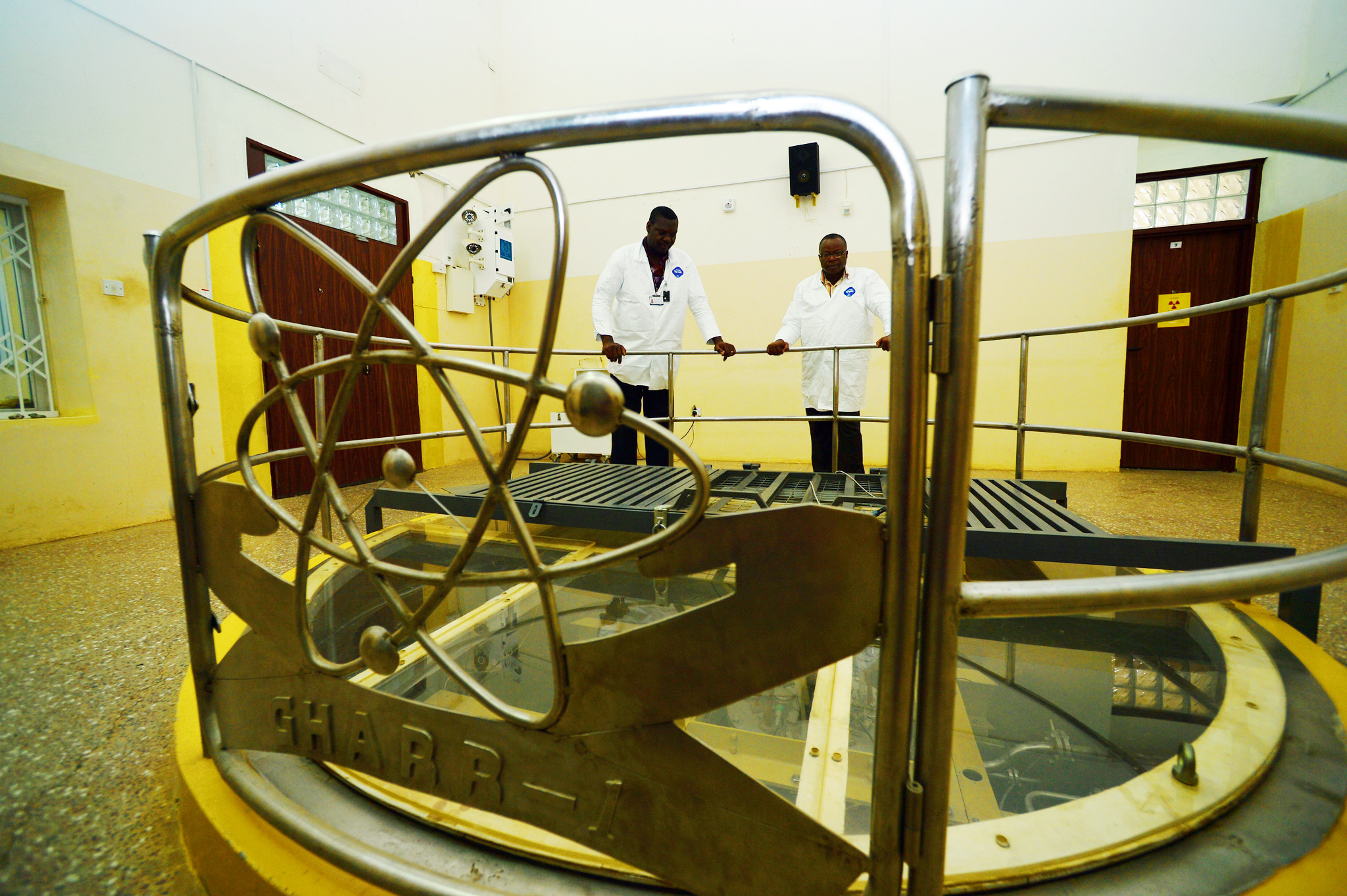
If you would like to learn more about the IAEA’s work, sign up for our weekly updates containing our most important news, multimedia and more.
Finding the right fit
How nuclear security is incorporated into research reactors
Inna Pletukhina
Research reactors benefit society in many ways. However, they can only fulfil their mission if their nuclear material is well protected and does not fall into the hands of terrorists. One of the ways in which countries protect their nuclear material today is by working with the IAEA to build nuclear security systems and measures into their research reactor designs.
But integration has not always been the case.
“More than 30 years ago, when most research reactors were built, they were designed for education, industry and research according to safety standards but without comprehensive security specifications built in,” said Juan Carlos Lentijo, IAEA Deputy Director General and Head of the Department of Nuclear Safety and Security. “Security of nuclear material and installations has long since emerged as a key concern, and now most of the research reactors built back then have been retrofitted.”
Achieving the goals of nuclear security — to prevent, detect and respond to criminal or intentional unauthorized acts involving nuclear or other radioactive material — is complicated by the specific characteristics and wide diversity of research reactor types and their related facilities. For older research reactors, additional complications stem from inherent facility vulnerabilities resulting from changing threat environments, inadequate security measures and equipment and the attractiveness of nuclear and other radioactive material for unauthorized removal and sabotage.
A research reactor facility may have been originally laid out with buildings allowing maximum accessibility and minimal physical protection measures. For example, research reactors built using an open pool-type design allow for easy access to the nuclear material found in the reactor’s core. This is an efficient design for educational purposes but could pose a security risk.
While each research reactor has its own nuclear security requirements, there are some common challenges, such as large groups of individuals accessing a research reactor for up-close, hands-on educational purposes. Unlike nuclear power plants, which are operated by a relatively consistent staff for years at a time, research reactors are often used by students and researchers who carry out short-term projects and who move on once their work is completed. This requires nuclear security measures that allow for education and research to continue without access delays, while still maintaining a high level of protection.
Given the variety of materials used, power levels, fission products, configurations, funding arrangements and staffing of a research reactor, standardization of nuclear security systems and measures is not possible, said Doug Shull, a senior nuclear security officer at the IAEA.
“When it comes to research reactors, there is no one-size-fits-all approach for protection. It has to be evaluated and implemented on a case-by-case basis,” Shull said. “Each reactor has a unique design and features that require the design of physical protection systems to allow the facility’s mission to be accomplished while ensuring protective measures are effective in a security event.”
While each country is responsible for nuclear security within its own borders, many draw on the IAEA’s advice on the level of nuclear security systems and protective measures available and its assistance with physical protection upgrades, insider threats and nuclear security culture programmes.
“ Developing an INSSP with the IAEA’s assistance helped us evaluate our national nuclear security regime as a whole and allowed us to determine how we can tailor nuclear security to fit our research reactor and best use the IAEA’s assistance for that process.
Integrated security support plans
For many countries, a key part of incorporating nuclear security at research reactors is within the scope of IAEA Integrated Nuclear Security Support Plans (INSSPs). These tailored plans help countries set up their nuclear security regimes. They are coordinated, upon a country’s request, with the IAEA to help a country review its nuclear security regimes and identify areas in need of improvement. They also highlight opportunities for assistance to support the development of an effective and sustainable nuclear security regime.
Thanks to its flexibility, an INSSP may be tailored to identify the specific needs of a State’s research reactor programme. These may include specific training activities in nuclear security and support in developing administrative procedures, exercises or physical protection upgrades.
“Developing an INSSP with the IAEA’s assistance helped us evaluate our national nuclear security regime as a whole and allowed us to determine how we can tailor nuclear security to fit our research reactor and best use the IAEA’s assistance for that process,” said Nasiru Bello, Director of Nuclear Safety, Physical Security and Safeguards at the Nigerian Nuclear Regulatory Authority.
Nigeria has one research reactor, which has been in operation since 2004, and developed its INSSP in 2010. The INSSP helped Nigeria take steps, with the IAEA’s support, to strengthen nuclear security at the country’s research reactor in line with the IAEA’s Nuclear Security Series publications. This systematic approach also focused on training research reactor personnel and on regulatory capacity building.
As the IAEA continues to seek ways to expand its support, one of the latest tools it is developing is the Hypothetical Atomic Research Institute (HARI) facility description. The HARI is a reference document describing many aspects, including security, that are related to research reactors and their associated facilities and that can be used to provide a country with a greater insight into nuclear security recommendations, as well as building knowledge and gaining practical experience in addressing nuclear security recommendations. The HARI will be an additional tool that countries can use to address their priorities, whether they have been identified through an INSSP, peer review missions or other avenues.


